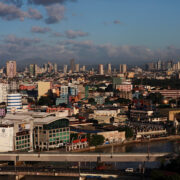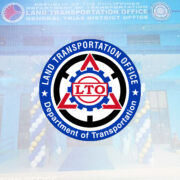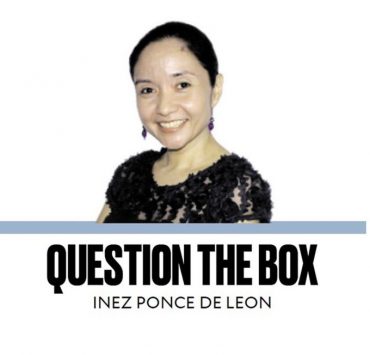New history from old maps

During my recent visit to the Netherlands, Philippine Ambassador Eduardo J. Malaya took me to see the literally palatial International Court of Justice in The Hague. We did not enter the so-called “Peace Palace” but contented ourselves with selfies by the wrought iron gates. We also looked for the rock from the Philippines that ornaments the “Peace Flame” burning on a pillar outside. There were massive stone benches at the entrance of the Peace Palace that had the word “peace” in many languages, prompting me to look for and find “kapayapaan.” The arbitral ruling in favor of the Philippines in our current dispute with China over areas in the West Philippine Sea was delivered in the Peace Palace. This reminded me of the beginning of my interest in depictions of the Philippines in European maps from the late 16th to the 19th centuries.
I was 16 when I first traveled to Europe on one of those silly tours that packed 12 countries in 30 days. Most of our time was spent sleeping on a bus by day and sleeping in small out-of-way hotels every night. The little I remember from that whirlwind tour were from places where we stopped and spent three days: London, Paris, and Madrid. Here we distracted ourselves from doing the laundry by seeing the sights. During one restroom stop, in a tiny German town, I made my way to an antiquarian bookshop, blew dust off leather-bound tomes, and peered into stacks of medieval church manuscripts in the bargain bins. My father nudged me to ask the shopkeeper if they had any old maps of the Philippines. I ignored him. Decades later, smarting from the prices of old Philippine maps at the Gallery of Prints, I wondered about rare maps we would have found there, cheaply, if we just asked.
My second regret was declining a six-month grant to dig up old maps of the Philippines from libraries, archives, and museums abroad to be used against China’s “historical claims” to the Spratlys and Scarborough Shoal. I thought, wrongly at the time, that for every 16th-century map of Asia showing the Philippines, China had something way older. And if the Chinese didn’t have any at hand, they could easily forge one from the “New One Dynasty.”
Fortunately, then Supreme Court Justice Antonio Carpio followed the lead and presented 270 ancient maps to the Permanent Court of Arbitration in The Hague, debunking China’s historical claims. Central to his argument was the 1734 map of the Philippines by the Jesuit Pedro Murillo Velarde drawn by Francisco Suarez and engraved by Nicolas de la Cruz Bagay, two native artists who proudly signed and identified themselves as “indio tagalo.” Carpio pointed out the Spratlys, then labeled as Los Bajos de Paragua, and Scarborough Shoal, then called Panacot. It is remarkable that three shoals in the area, marked as dangers to navigation and travel, are aptly named Panacot (threat), Galit (anger), and Lumbay (sorrow).
Chinese maps show their southernmost territory in Hainan, the geographic origin of chicken rice. They have not been able to produce a map older than the 1734 Murillo-Suarez-Bagay map that would assert their so-called historical claim to the Spratlys and Scarborough Shoal.
Little wonder that top prices have been paid at auction not just for the rare 1734 version of the Murillo-Suarez-Bagay map but even the reduced versions of 1744 and 1788 that come with a charming image of St. Francis Xavier on a chariot drawn by horses on the rough seas toward Mindanao. It was previously believed that this pioneering Jesuit missionary to Asia set foot in Mindanao. Unfortunately, I do not own any of the “original” Velarde-Bagay-Suarez maps because the handful I have come across were way beyond my budget. So I content myself with a German copy of the original Spanish map published in Nuremberg in 1760, with text translated from the original Spanish into French.
This map has given me hours and hours of fun not just learning geography and waterways. It is the map that made me rethink what I was taught in grade school – that an archipelago was a group of islands separated by water. This map taught me that before the Spanish contact, the Philippine archipelago was actually connected by water. It is this map that made me wonder how an accurate representation of the Philippine shape was possible in 1734, long before they had balloons, satellite imaging, Google Earth, Google Maps, and Waze.
Many years later, in an Ermita antique store, I scored the magnificent three-piece map of the Philippines by Francisco Coello that was issued separately over three years from 1849 to 1852. Nobody noticed it because they were folded inside boards, but I knew that when opened and put together, this was the largest map of the Philippines at the time, based on the best information. It was the basis of later topographical Philippine maps until Google Earth made it obsolete.
While history is often based on written primary sources, a more engaging way of looking at the past is done through visual sources, like maps that prove you can learn something new from something old.
Ambeth is a Public Historian whose research covers 19th century Philippines: its art, culture, and the people who figure in the birth of the nation. Professor and former Chair, Department of History, Ateneo de Manila University, he writes a widely-read editorial page column for the Philippine Daily Inquirer, and has published over 30 books—the most recent being: Martial Law: Looking Back 15 (Anvil, 2021) and Yaman: History and Heritage in Philippine Money (Bangko Sentral ng Pilipinas, 2021).


















